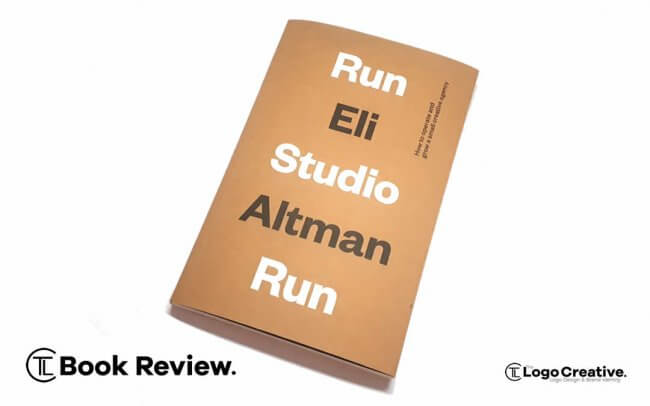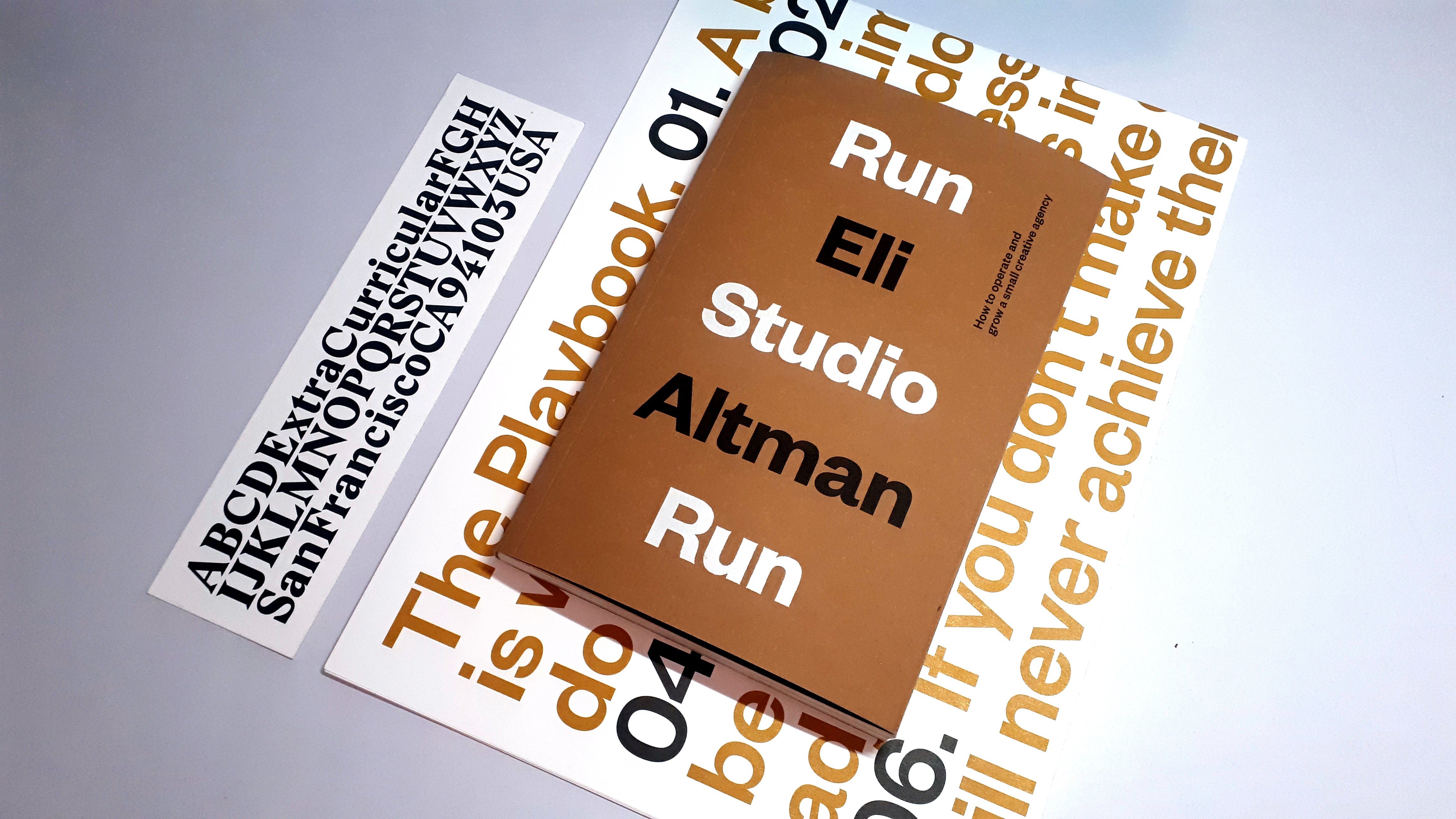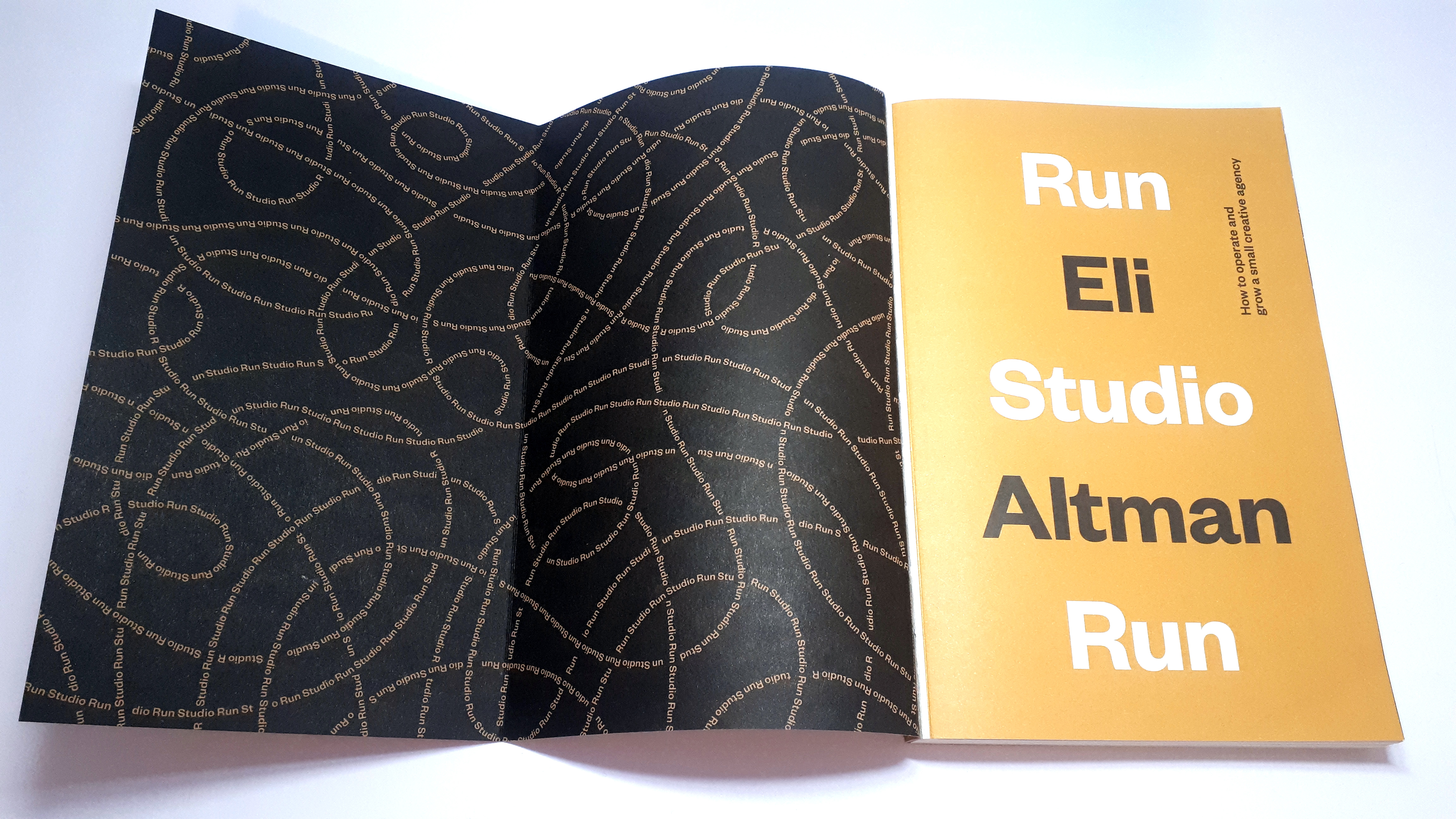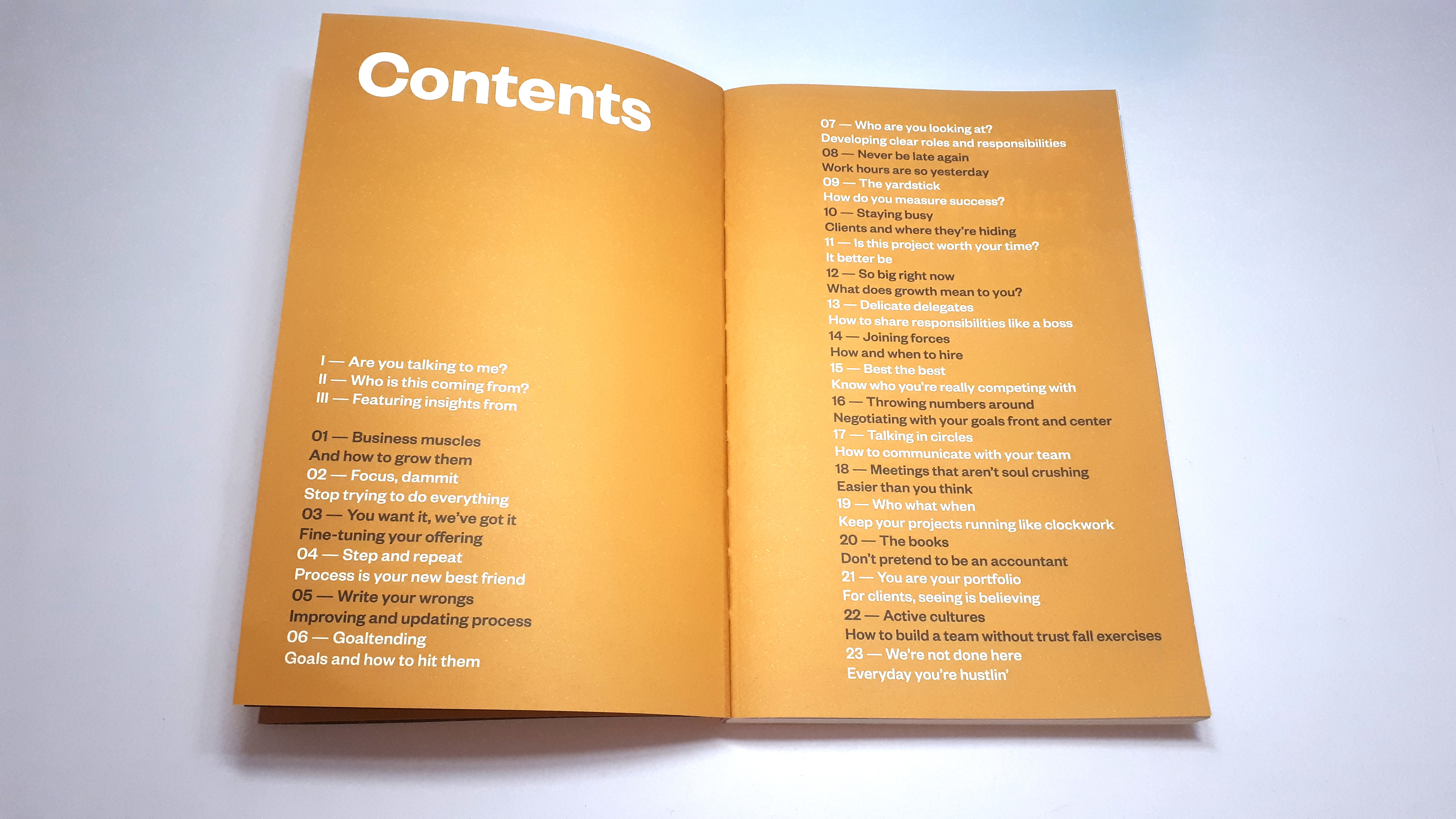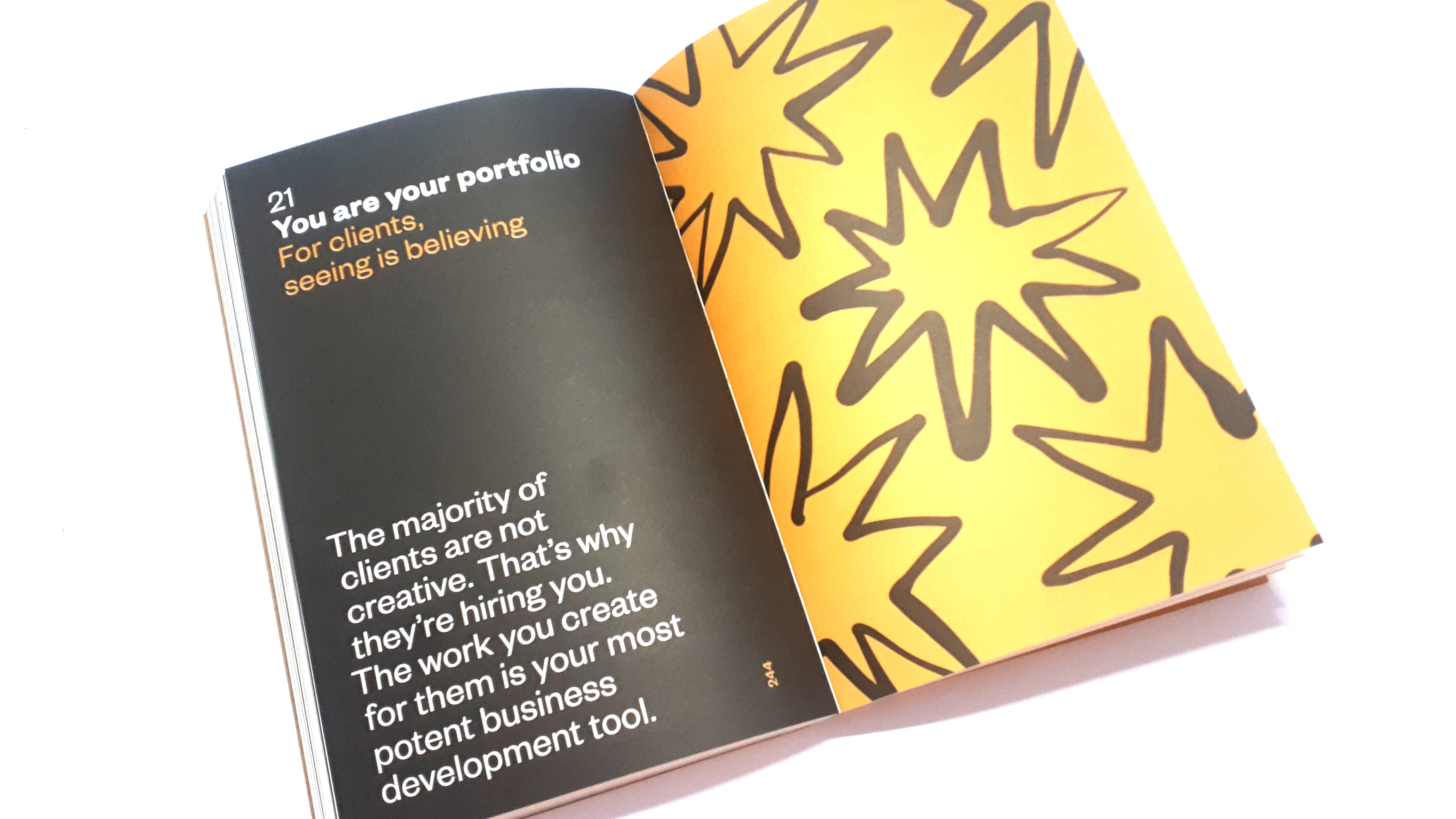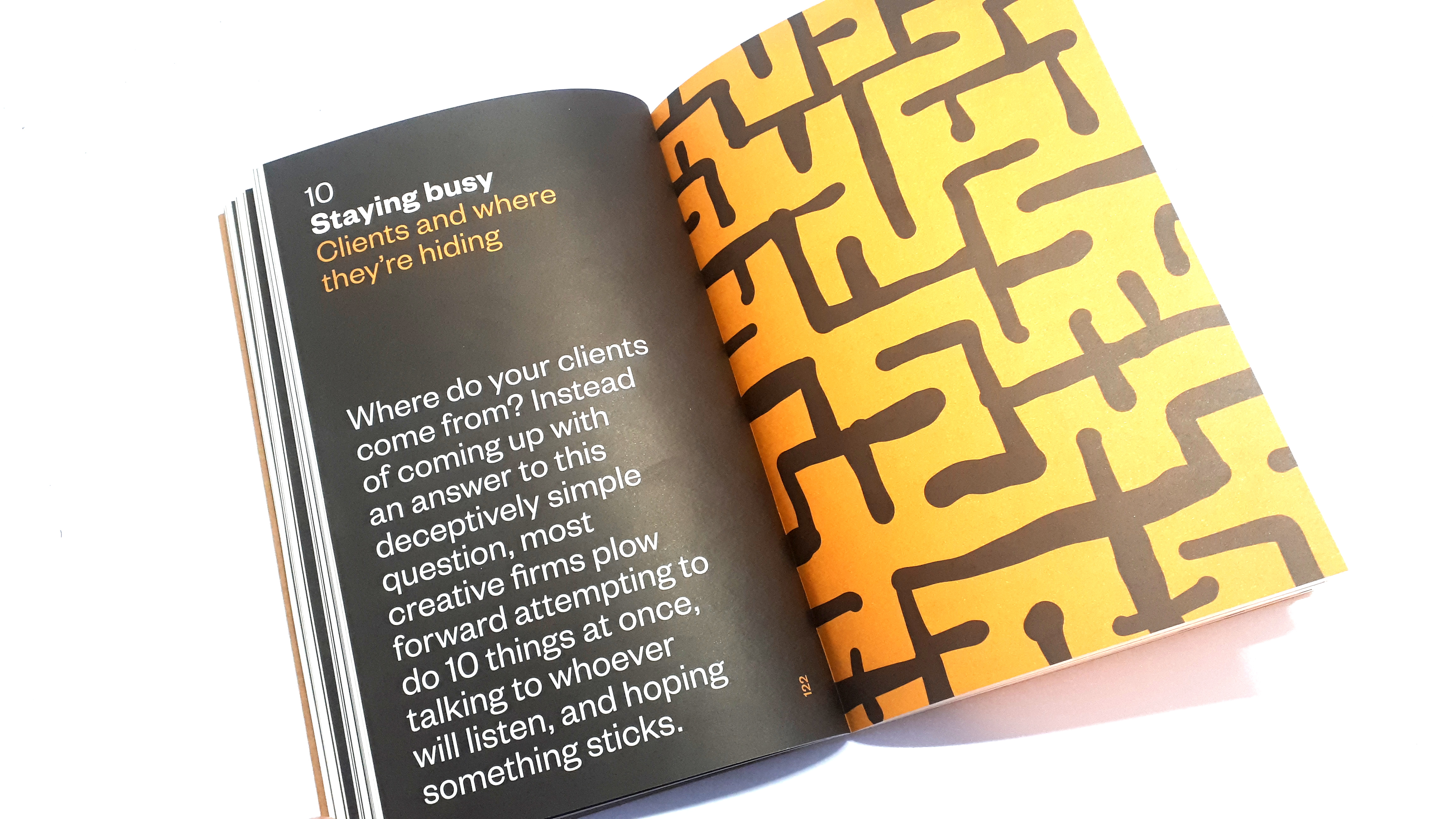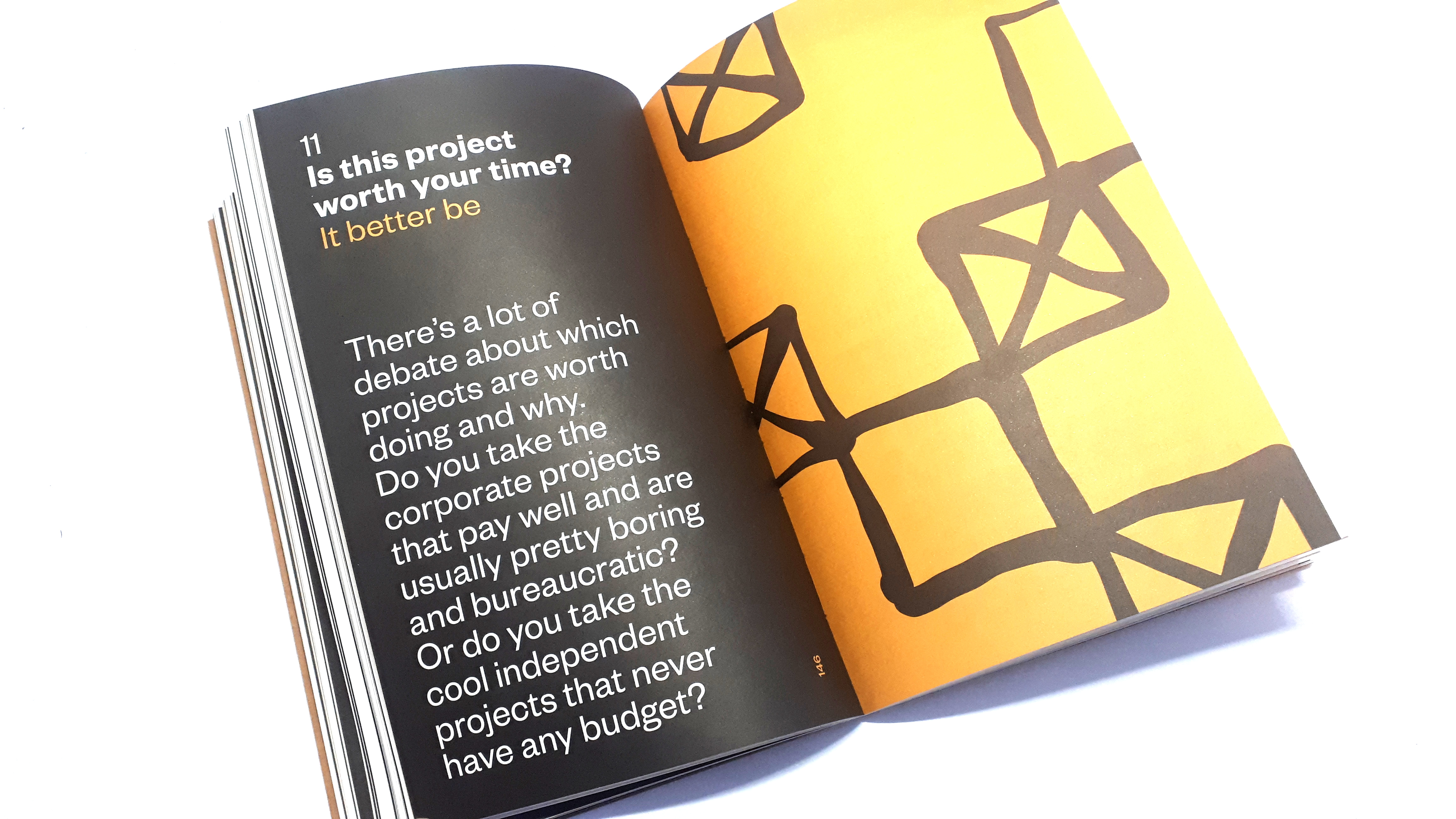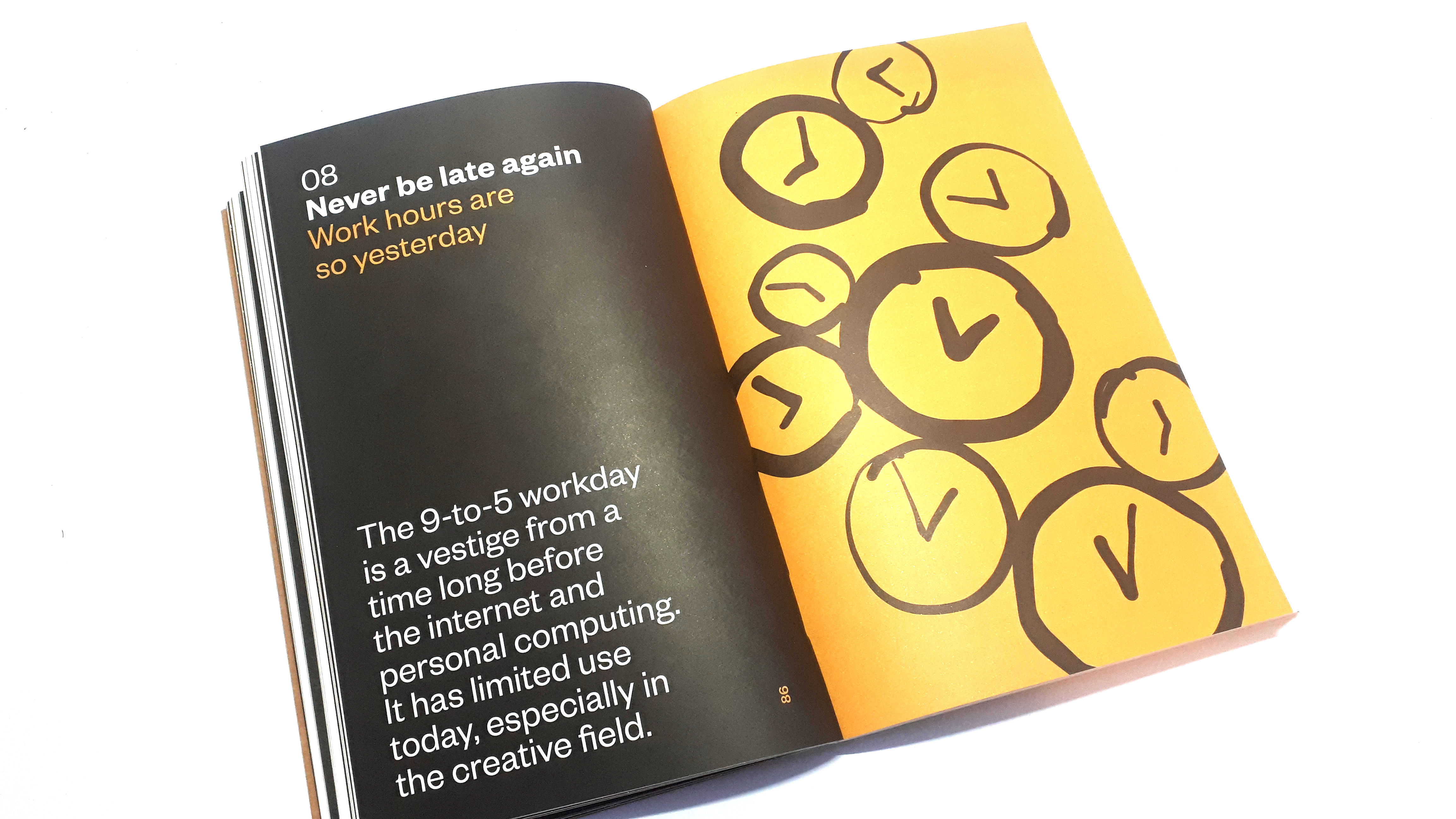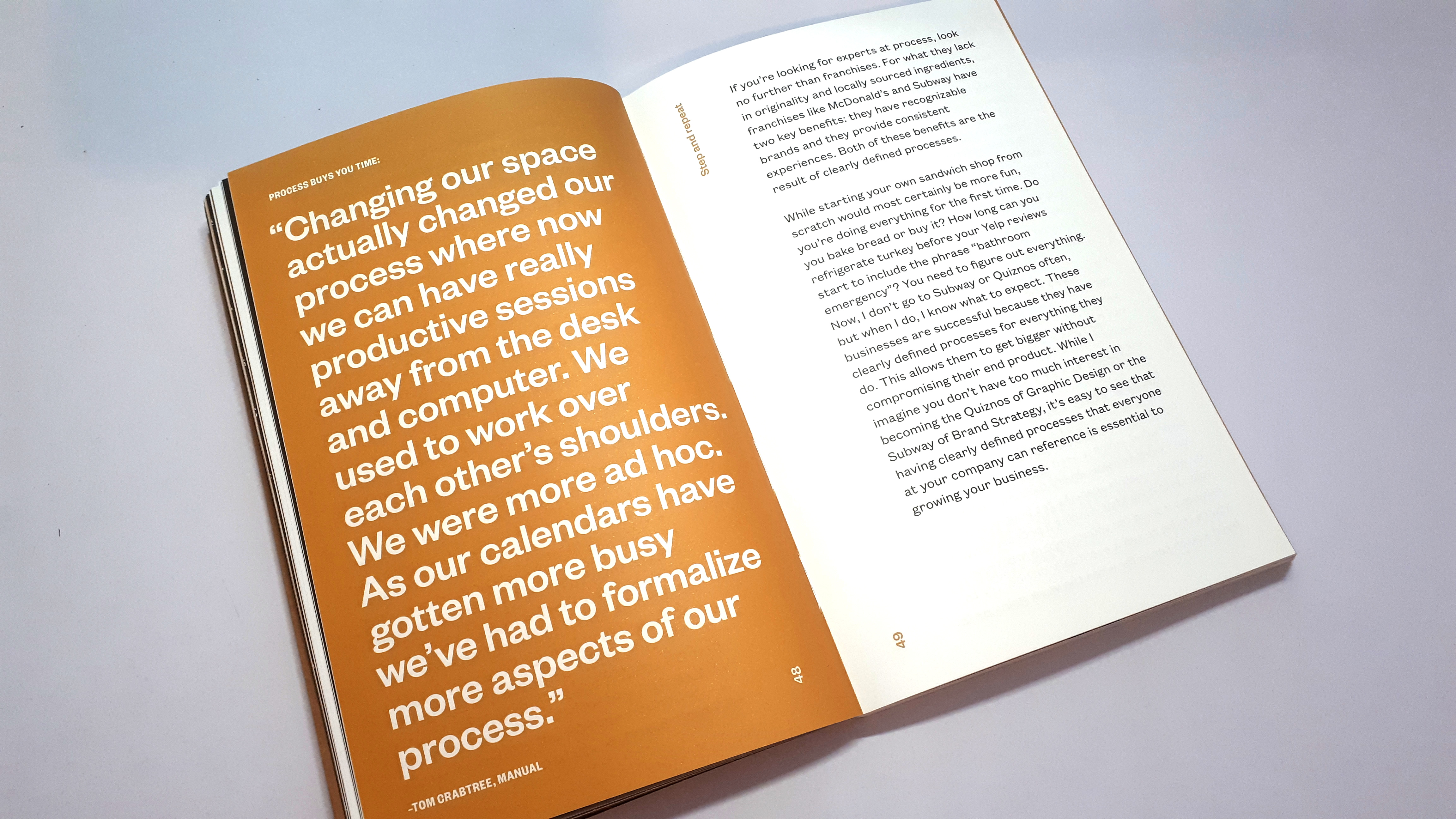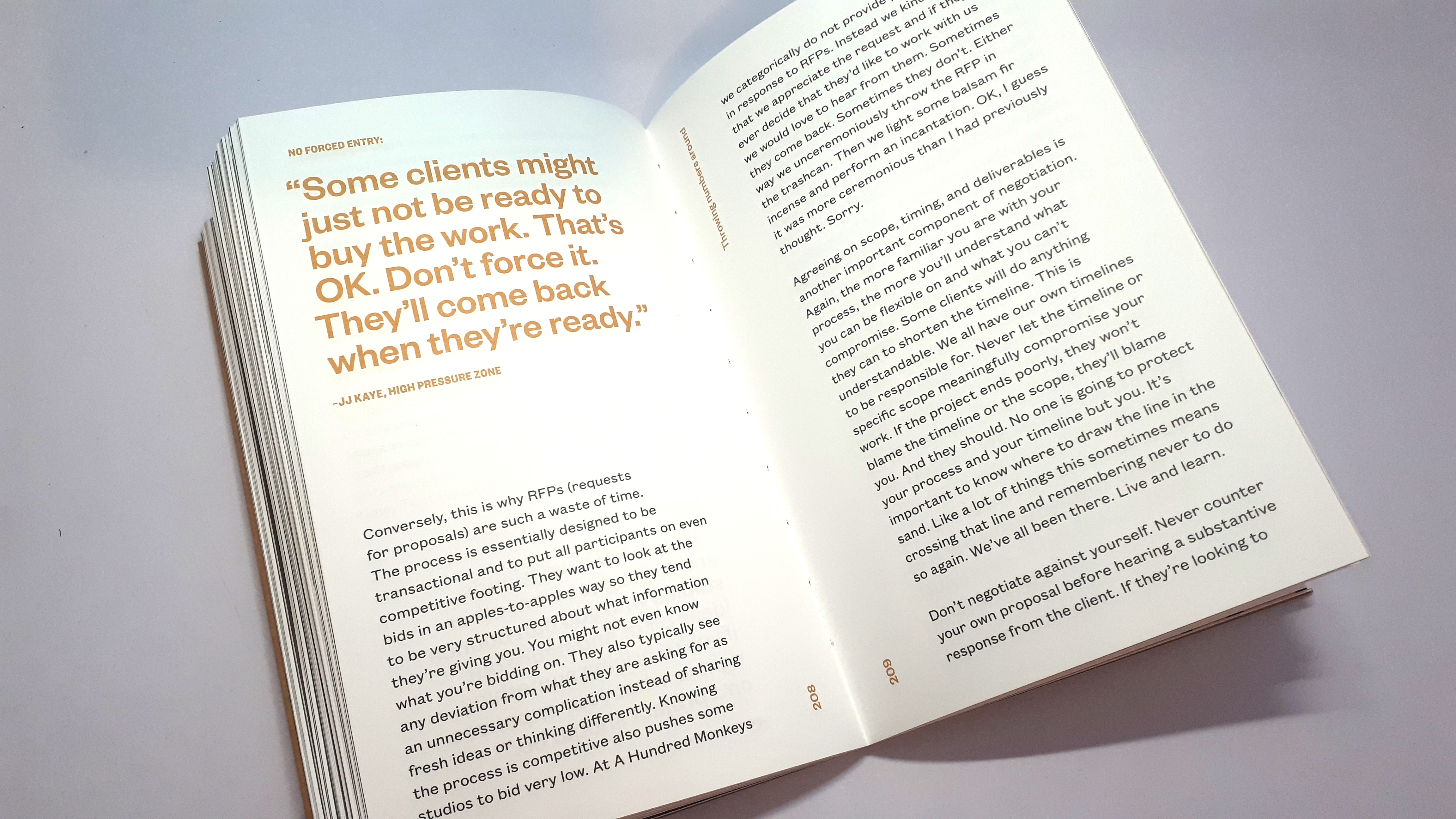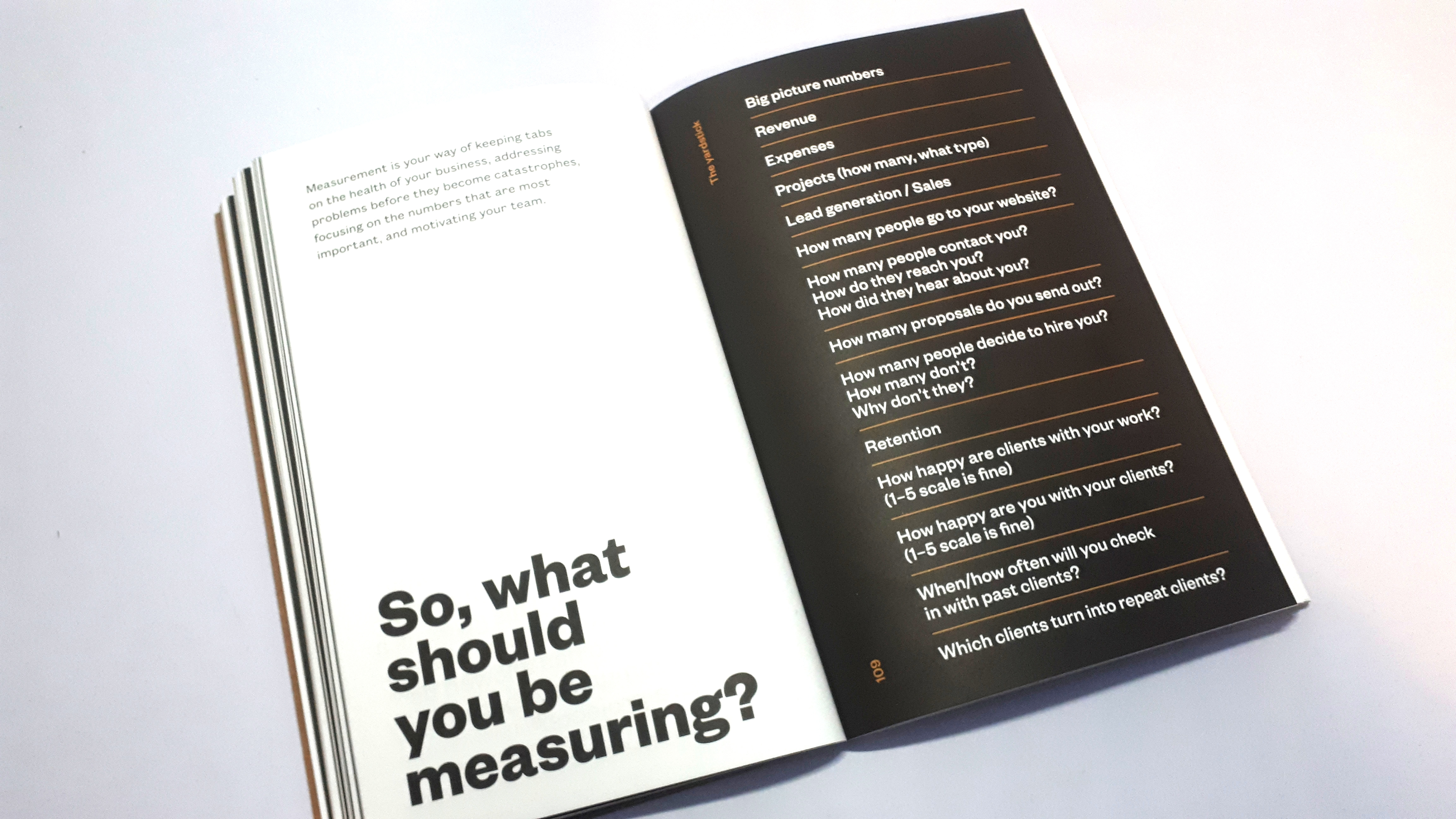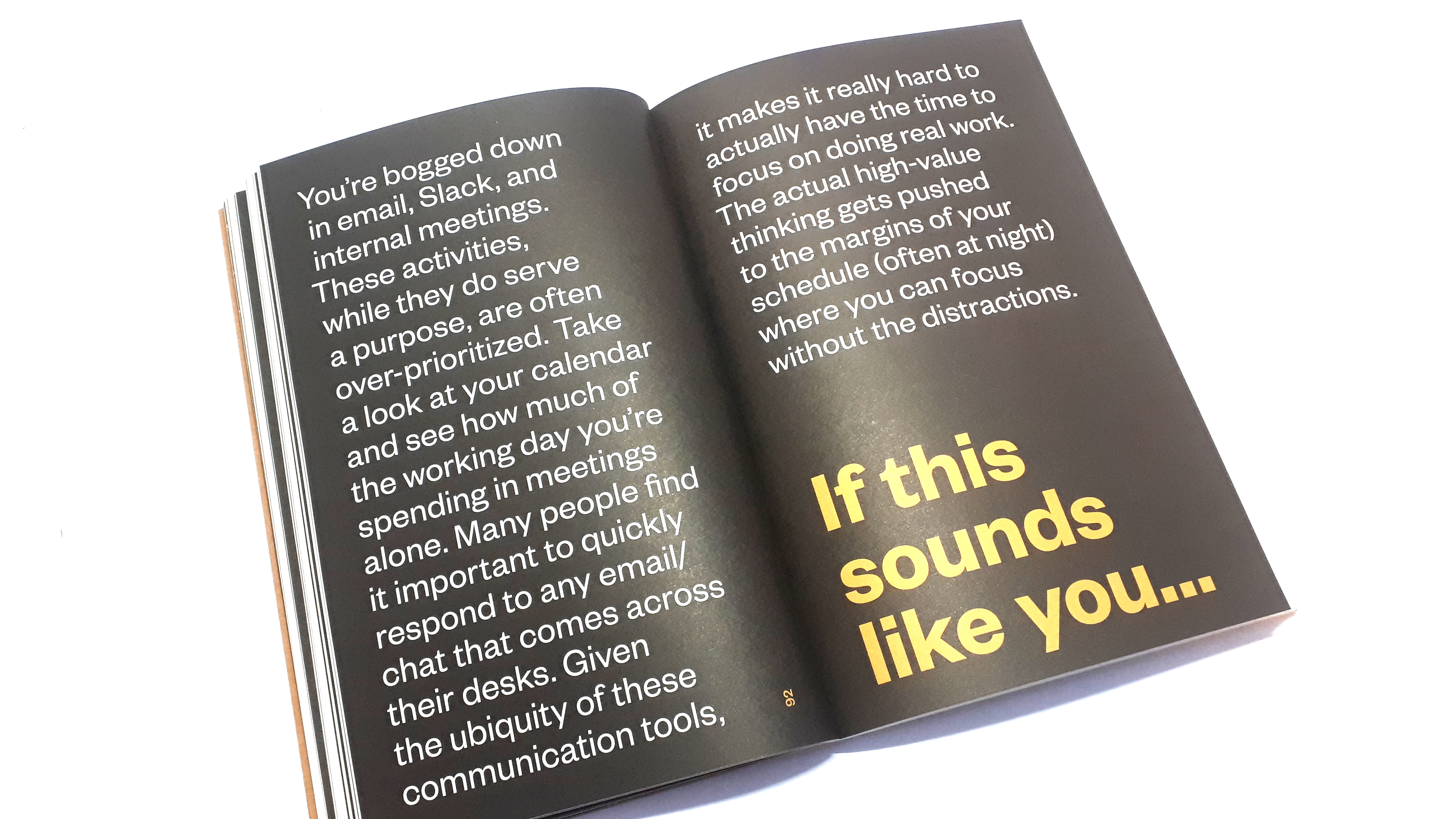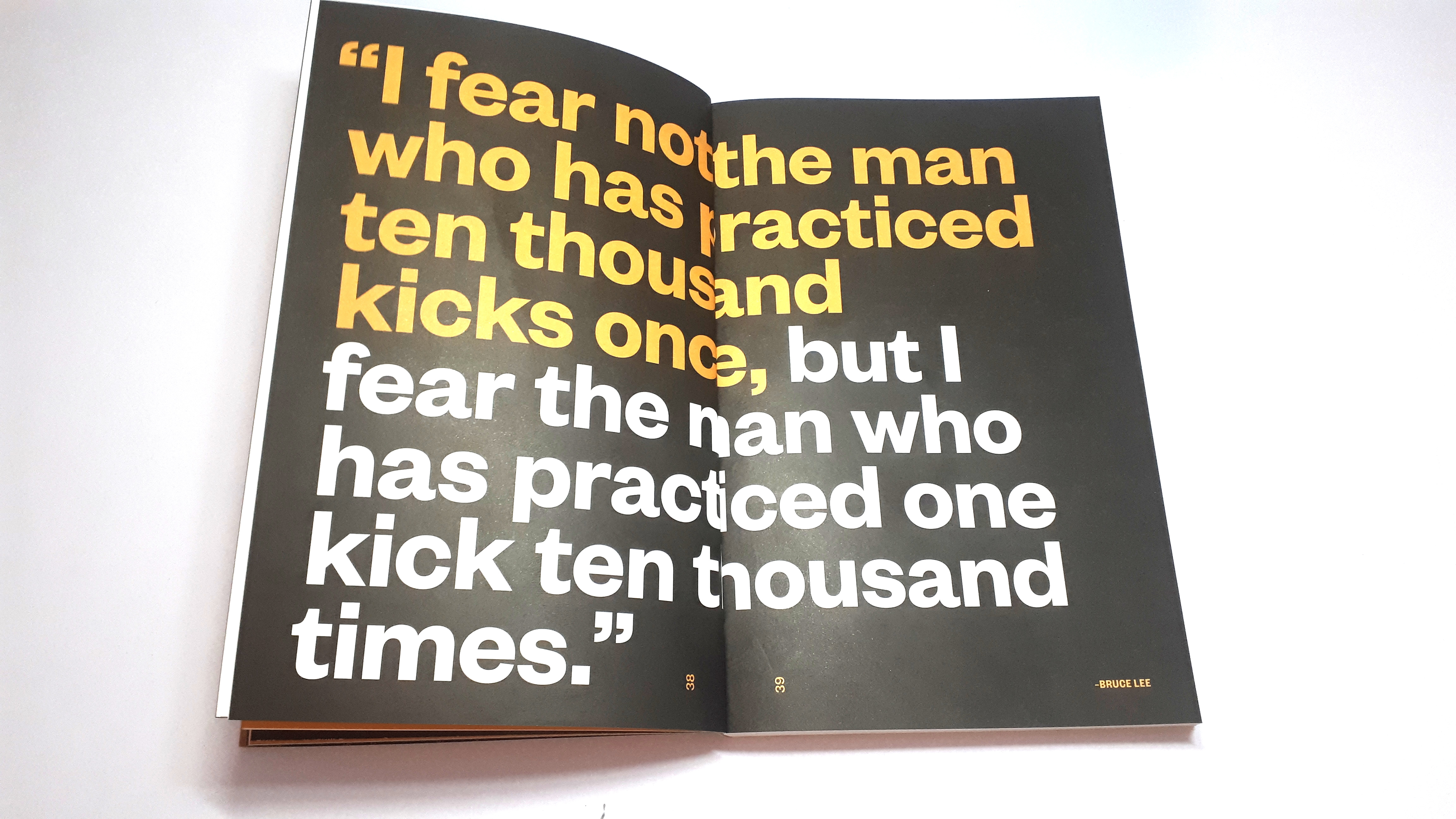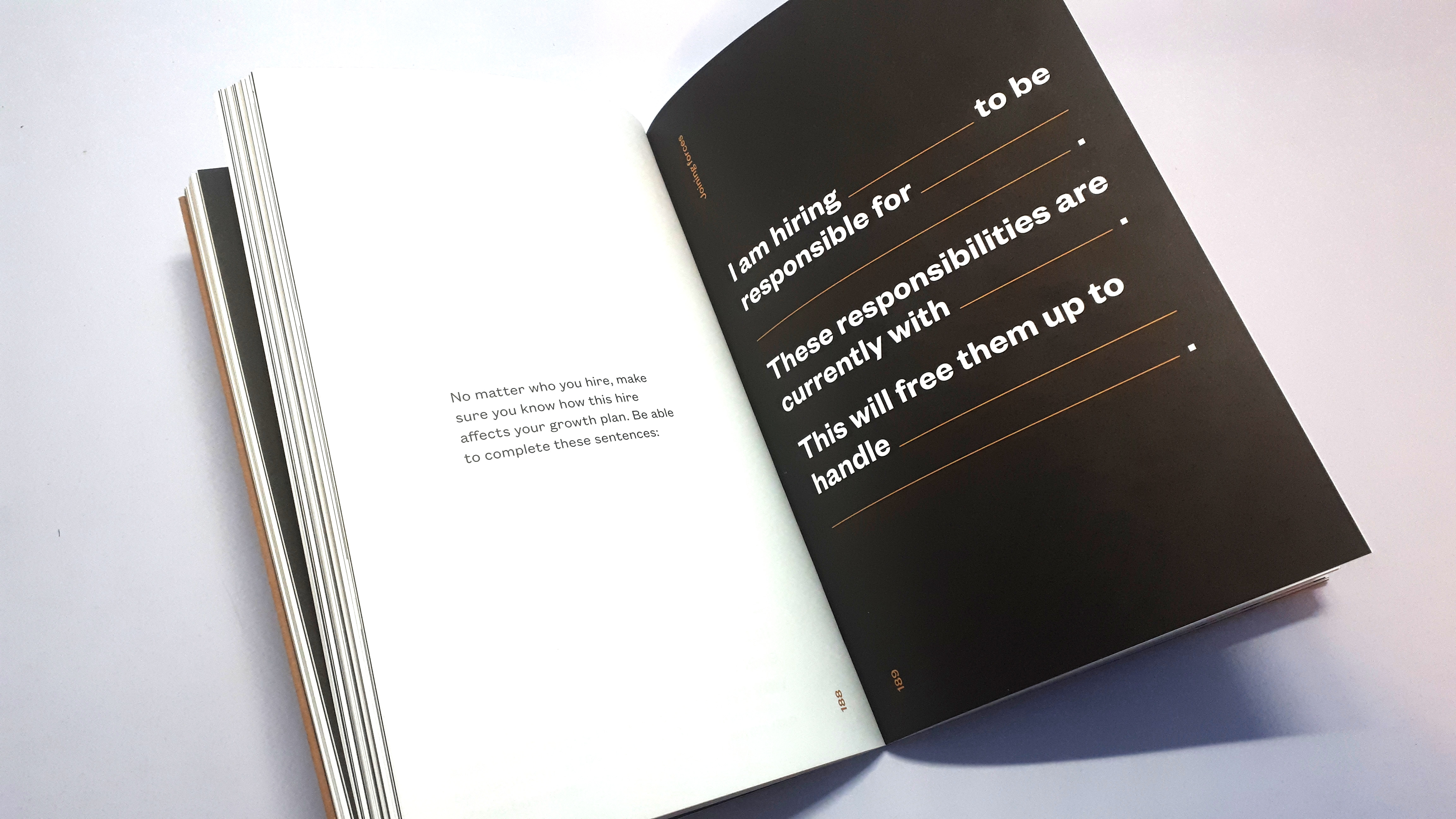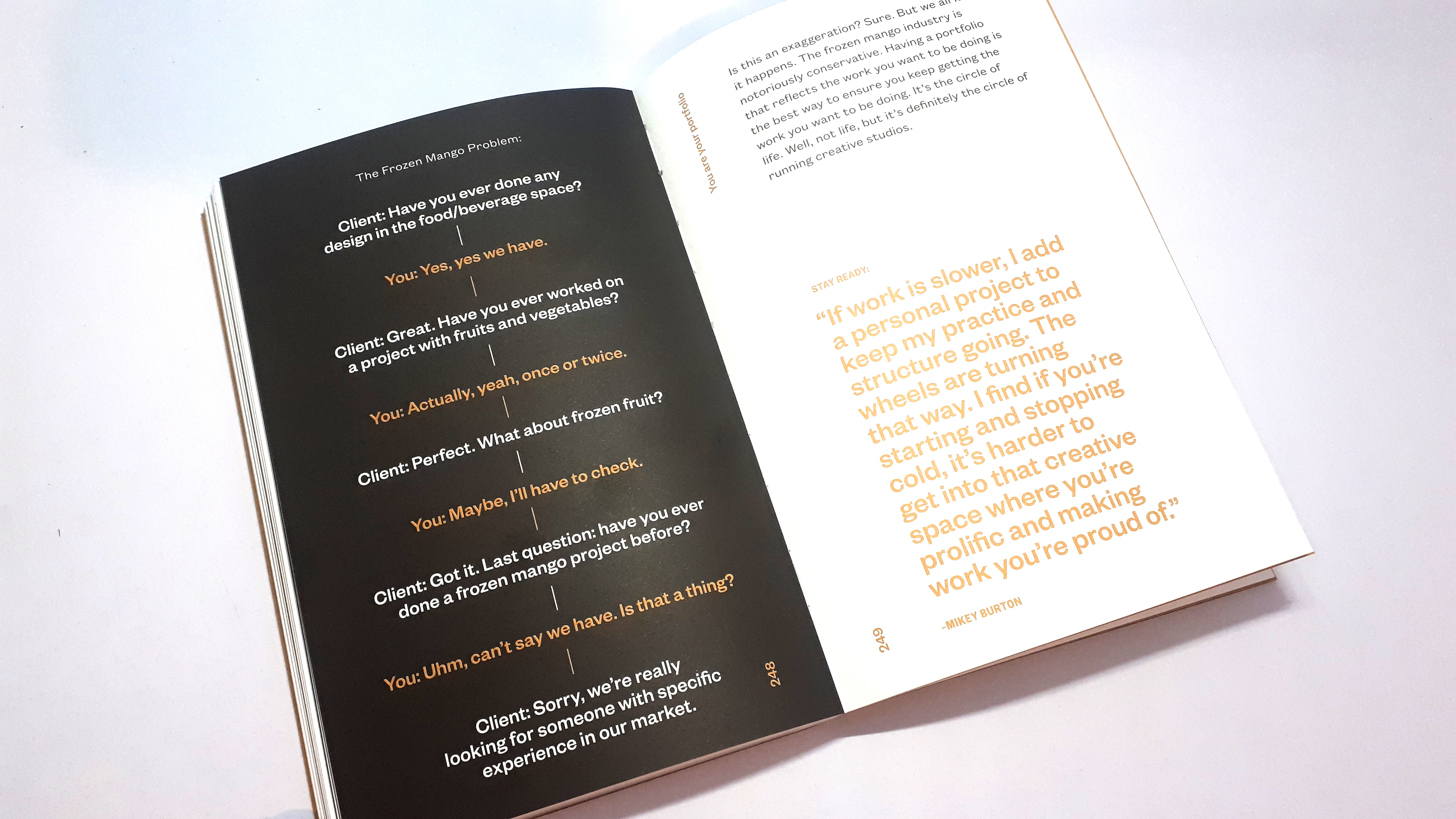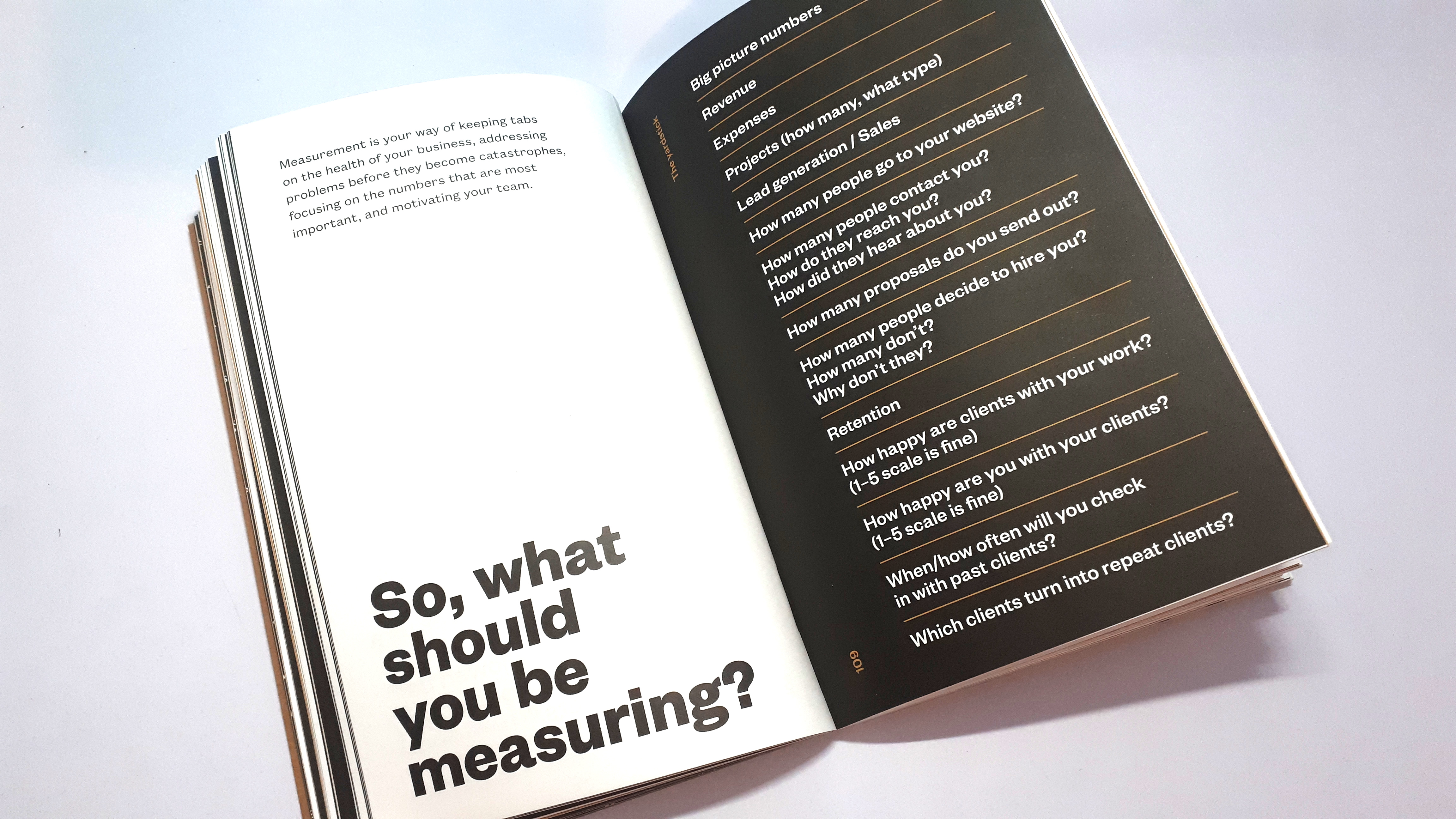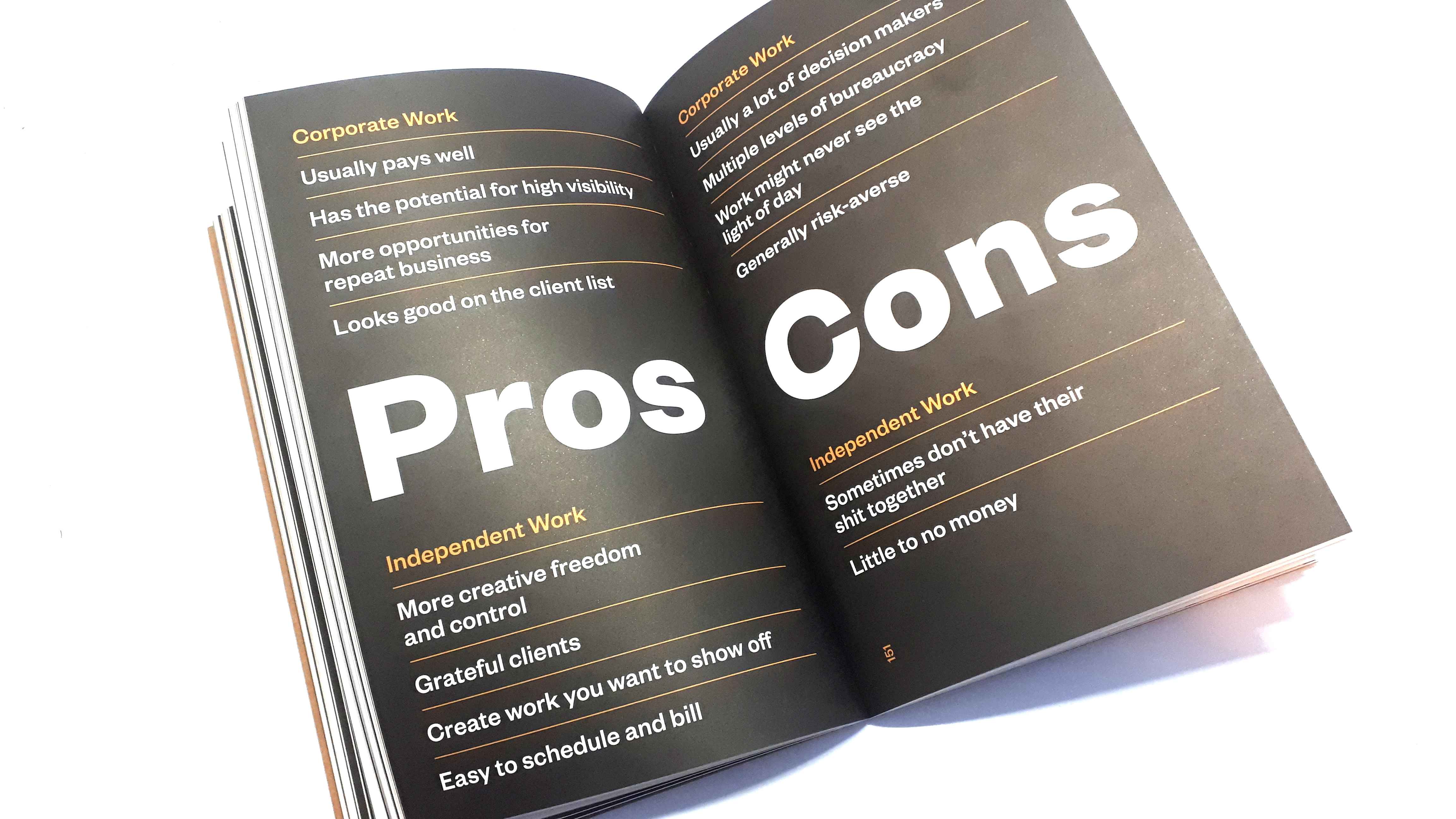Run Studio Run is a book that details how to manage and grow a small creative studio. The first edition was successfully funded on Kickstarter and is available for purchase through Extracurricular Press in May 2018.
Run Studio Run is a step-by-step guide that helps you look at your studio critically—as a business as opposed to an artistic endeavor. You will establish goals and paths and how to reach them. You will see that the more of your business you can commit to the process, the more you will free yourself up to do the work you really love.
Run Studio Run is written by Eli Altman, creative director at A Hundred Monkeys, the Berkeley, California-based naming and branding studio. He is also the author of Don’t Call It That – A Naming Workbook. He has led projects for clients including Google, Samsung, and Target–as well as a wide variety of bars, restaurants, and startups. Before joining A Hundred Monkeys in 2009 Eli worked as a strategist at MetaDesign and Factor Design in San Francisco.
He has been interviewed on naming and branding with The New York Times, NPR, The Guardian, Inc, and 99% Invisible.
I would personally like to thank Eli and Extracurricular Press for sending us a copy of the book. It’s been a really good read I have thoroughly enjoyed both reading and reviewing for our readers.
I will start with the physical book before we jump in, starting with the cover design and the first thing I noticed is the feel of the book it has a nice premium card textured feel to it you really need to hold it to experience it. Run Studio Run was designed by Moniker in San Francisco and the book also contains a series of 3 5″x7″ art prints if you backed the project on Kickstarter and pledged a certain amount.
In addition to the book and art prints, I received a fold-out 22″x34″ field guide, also designed by Moniker. The field guide acts as a companion to the book, giving you places to write in answers and ideas you pick up along the way. I also received a bookmark with the book from Extracurricular Press.
Another thing I love about new books is the smell it may sound strange but I know I am not the only one out there who appreciates this. Upon opening the book you get to experience a really nice fresh paint smell and a unique one at that and not one I have experienced before with a new book.
The fresh print smell stays with the book and mine is still there months after receiving the book it’s like a make you want to read it aroma. The book design is one of the nicest I have seen and experienced this year and was a pleasure to not only read but look at as well.
Each chapter has a two-page spread that really gears you up for what you are about to read. On one side you have the title of the chapter with a little insight into its content while the other side of the page as some nice simple illustrations that were designed by Moniker and they really do set the tone for the book.
As Eli explains at A Hundred Monkeys isn’t the only way to do it, Run Studio Run is filled with insights and tips throughout the book from the leaders of a diverse range of studios including:
Commercial Type, Aaron Draplin, Hey Studio, High-Pressure Zone, Kate Bingaman-Burt, Manual, Mikey Burton, OCD, Perky Bros, Stansion, Moniker, Tung, Under Consideration, and The Weekend Press.
So what can you expect from reading this book? You will establish goals and the paths for reaching them. You will see that the more of your business you can commit to process, the more you will free yourself up to do the work you really love.
Run Studio Run goes through a range of business areas you will face in your creative studio and in most businesses but from a creative standpoint which really makes the book stand out as unique.
Throughout the books areas, it explains what you’re going to be working on:
- Your offering
- Studio processes
- Goal setting
- Responsibilities and delegation
- Measuring success
- Finding new work
- The competition
- Negotiation and agreements
- Bookkeeping and accounting
- Meetings
- Studio culture
- And a lot more
I could go through each chapter and explain what you’re going to read and learn but I’m not going to do that as I feel this book needs to be read and enjoyed without knowing beforehand what you’re going to read.
My experience of reading this book was simply awesome and a book I could not put down if it was not for the fact that I have two businesses to run and a family to take care of I probably would not have put this one down until finished but when I did need to put it down I could not wait to pick it back up again.
If your curious about how people make the decision to start a small creative studio or you’re looking to take your studio to the next level and scale up then this book is for you.
Reading Run Studio Run makes you the reader feel like you have your own personal business coach. It gives you plenty of valuable information to get started and stay hungry for more.
The handy insights and quotes given throughout the book by industry leaders such as Aaron Draplin, Commercial-Type, Hey Studio, and Moniker are very handy and nice little break spots in-between the main content that makes you want to read more.
Eli has clearly been there and done that so the advice your reading is tried and tested and explained in an honest way. Eli keeps it real and talks through everything you need to know to be successful in your creative business.
At the back of the book, Eli also includes more reading resources such as a short list of books he recommends reading, books that Eli himself has read and implemented strategies and techniques from which is nice and handy as you continue your creative business journey.
Even if you aren’t starting/managing your own creative studio, what you will learn from this book can translate into running any kind of business. Run Studio Run is a great read that is also beautifully designed containing invaluable advice, so what more can you ask for! I highly recommend you get yourself a copy and enjoy it just like I did!
Below is a Q&A we did with Eli we asked him some questions about the book.
The Logo Creative – What sparked the idea for you to want to write Run Studio Run?
Eli Altman – I wanted to write the book I wish I had when I started running A Hundred Monkeys. I read a lot of books about running businesses. There are also a lot of books about creative studios though they tend to focus on aesthetics. Studio Culture by Adrian Shaughnessy and Tony Brook was the deepest dive I could find into how studios operated. I wanted to focus more on the unsexy stuff—the processes and guiding principles that kept studios growing and running smoothly as businesses. At design school, at least when I went, there was no attention paid to the actual mechanics of how to run a successful business. Many small design studios are successful despite themselves. I wrote Run Studio Run to be the business resource for small creative studios.
The Logo Creative – How long did it take to complete the book, did you face any challenges along the way?
Eli Altman – One thing I learned writing my first book, Don’t Call It That, is that writing is the easy part. Editing, designing, indexing, production—that’s what seems to take the most time and energy. The actual writing and interviews took a couple of months. I mostly wrote the book in the morning before everyone else showed up to work. I had just read Deep Work by Cal Newport and was happy to find how quickly the book came together when it was the only thing I was focusing on. I hadn’t really done a book with interviews before so figuring out a good way to incorporate quotes without interrupting the reader’s rhythm was an interesting challenge.
The Logo Creative – The book’s design is fantastic! What was it like working with Moniker to create the physical book?
Eli Altman – Amazing. I’ve been lucky enough to work with Moniker several times over the last five years or so on various projects. They’re always incredible to work with and collaborative in a really productive way. The biggest reason I didn’t go the traditional publishing route was because I wanted the design process to be collaborative. I’ve heard horror stories about authors hating the design of their books. We discussed the feeling, the audience, the different chapters and callouts. From there we honed in on a direction fairly quickly. I was thrilled with how it turned out: the layout, the diagrams, the illustrations.
The Logo Creative – What would be your advice for someone looking to run a Kickstarter project to publish a book?
Eli Altman – This was my first Kickstarter project. Initially I drastically underestimated the time commitment. Promoting the project was a part-time job at the very least and promotion doesn’t come naturally to me. Lots of posts and tweets. I did a charity match for a few days where I would match pledges with donations to four charities. When Kickstarter decided to feature the project, the pledges started to pick up speed. If there was one thing that surprised me about the experience I’d say it’s the fulfillment longtail. We shipped out all Kickstarter orders back in July. I still have people, to this day, messaging me through Kickstarter saying they missed the download window for the digital edition and asking for a link. Not really a big deal but there are a few things Kickstarter can improve on the fulfillment end, for books especially.
The Logo Creative – When reading business books I find myself taking notes on post-it’s while reading and then sticking them on the relevant page so I can refer back to them. Do you have any good tips on taking in the information while reading?
Eli Altman – I do the same thing. I think it’s a great approach. With paperbacks sometimes I write in them directly. Another thing I do with some business books is write a 1-page summary to share with other people at A Hundred Monkeys. The act of creating the summary helps me codify what I want to take away from the book.
The Logo Creative – Do you have any final words of wisdom for our readers that will help them in their creative businesses?
Eli Altman – Write down step-by-step processes for the activities you do on a regular basis. This makes sure everyone’s on the same page, helps with onboarding new hires, makes you more efficient as a studio, and serves as a basis for reflection when you’re looking to improve how you do things. If you think everyone at your studio is already on the same page, ask a few people to write down the detailed process for a key activity and then compare notes. I can guarantee they won’t write down the same steps.

